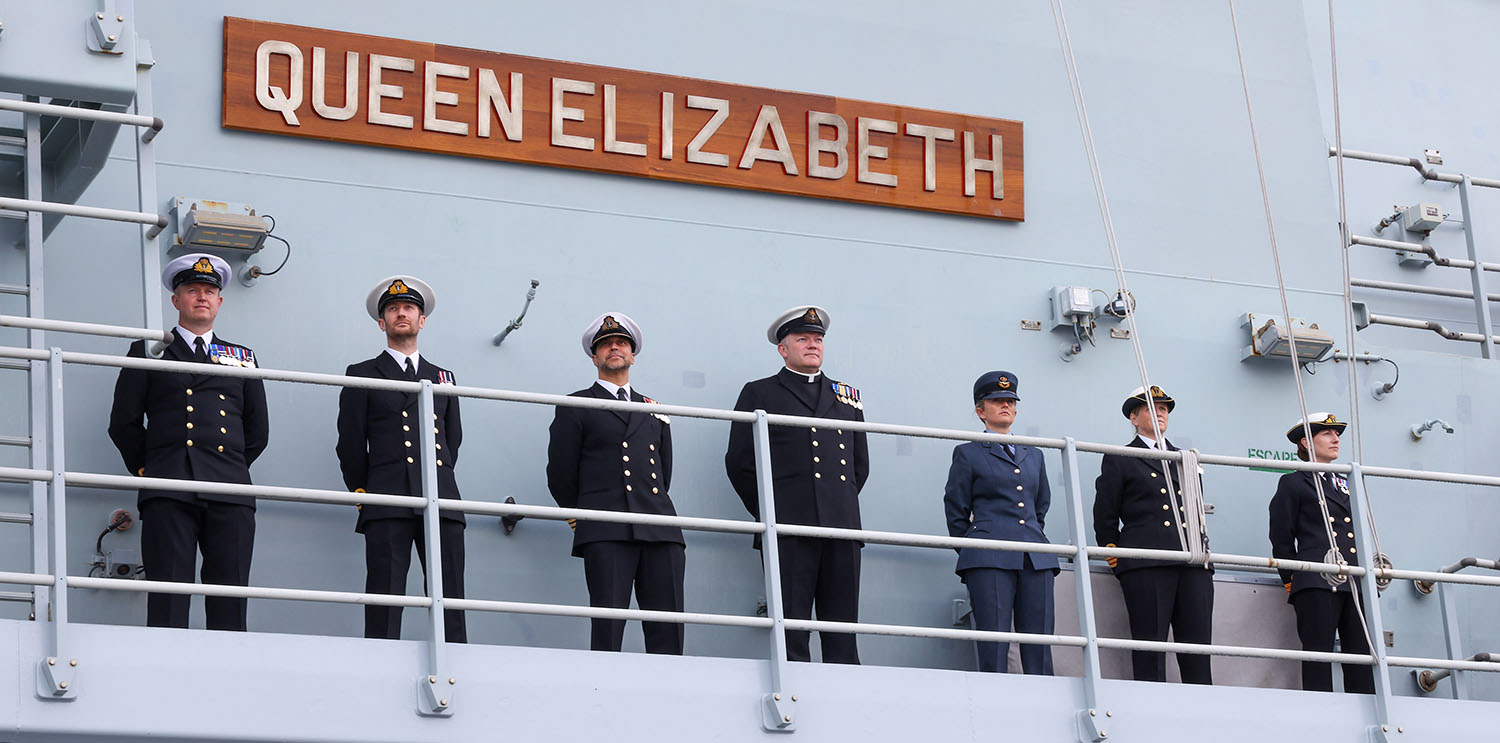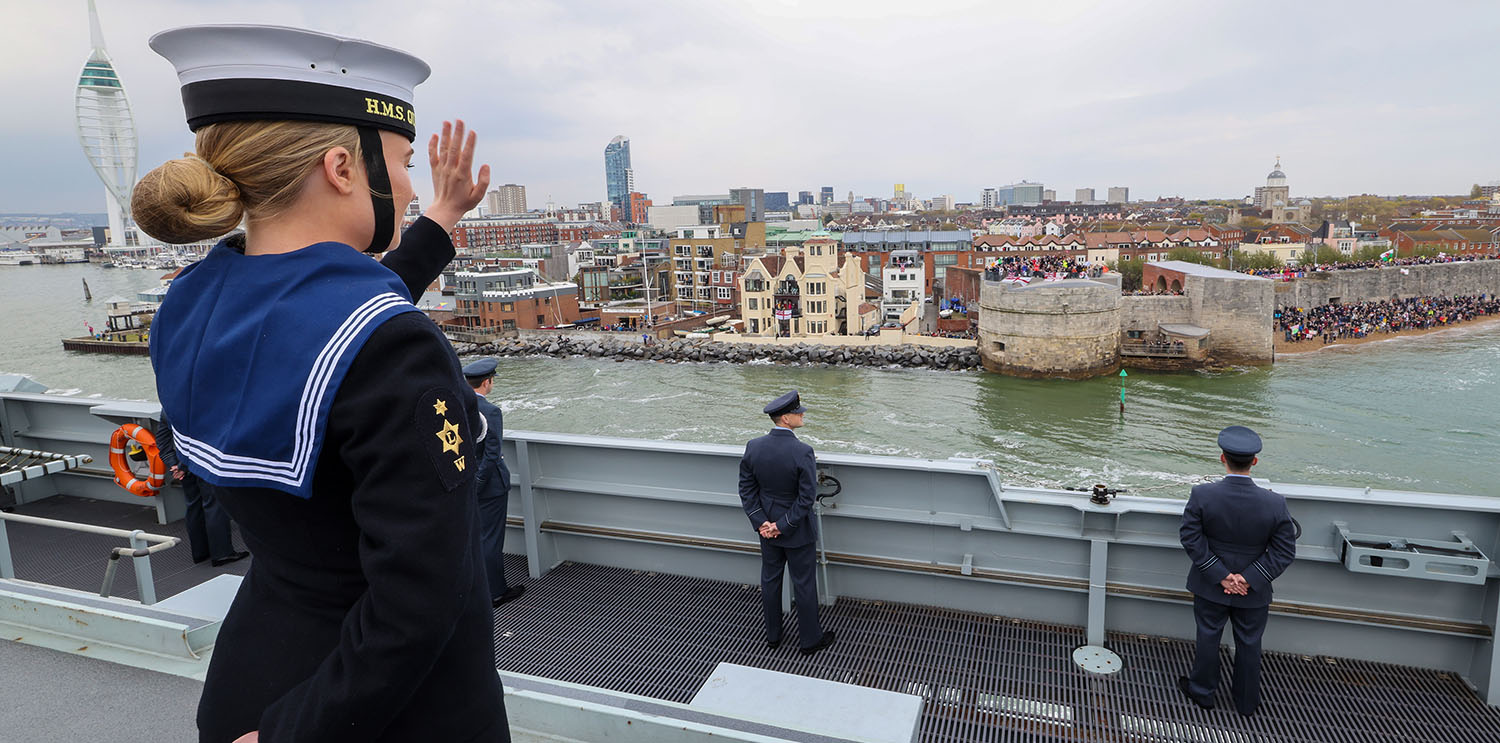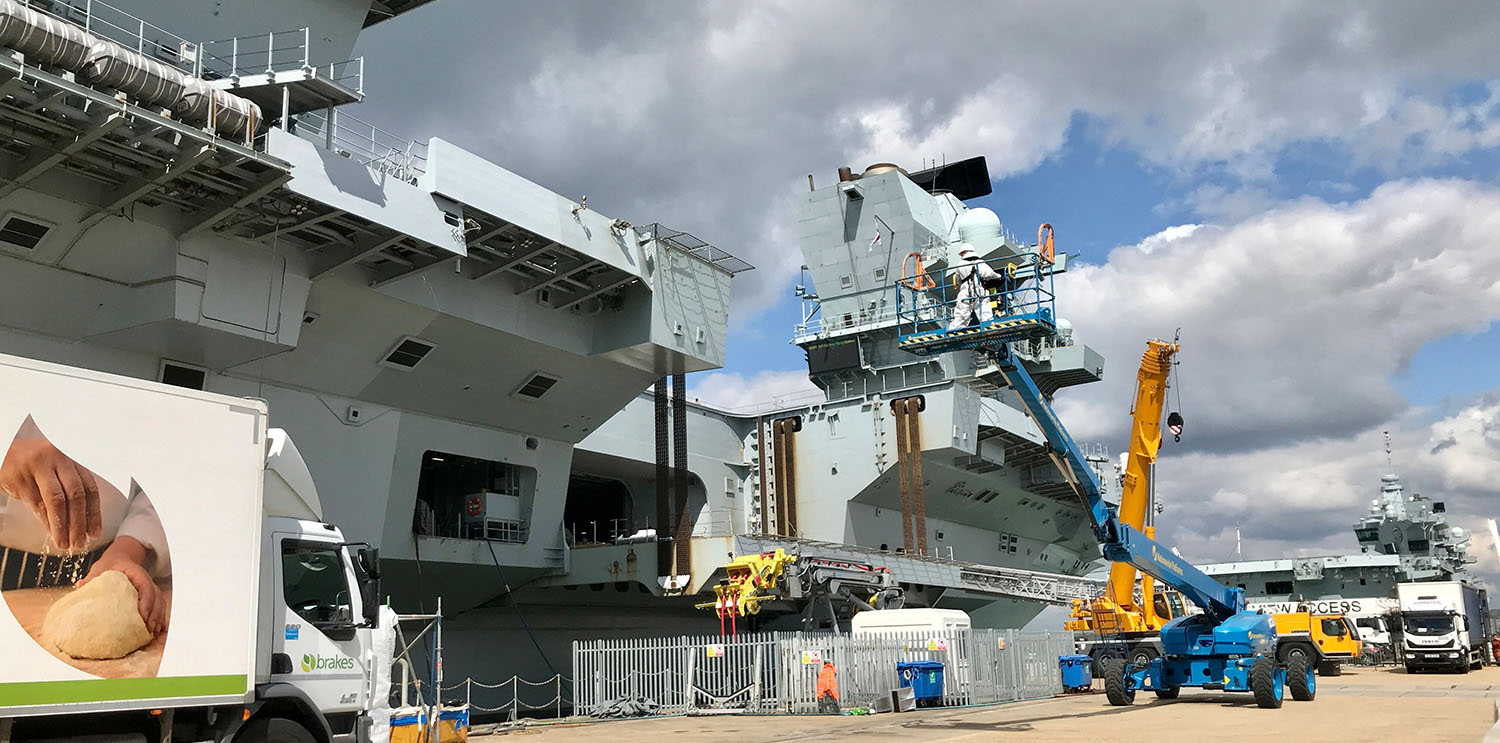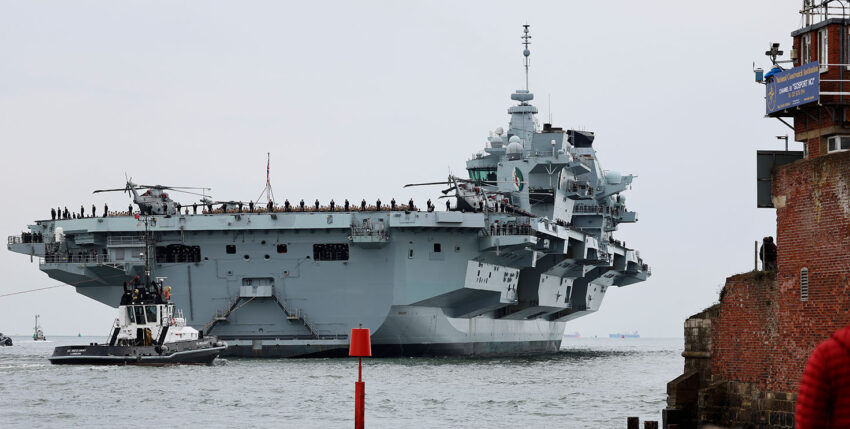Let's go! The first ship of the British Carrier Strike Group left the port of Portsmouth on the morning of 1 May. The HMS Diamonda Type 45 destroyer, left her home port to take part in the Strike Warrior manoeuvre off the coast of Scotland over the next two weeks. A short time later, it was "cast off and in" for the HMS Richmond in the harbour of Devonport. At 16:45 the Queen herself. Together with her, the HMS Defenderanother Type 45 destroyer, and the HMS Kenta Type 23 frigate.

To ensure that all manoeuvres are carried out safely, 200 people are on duty. From the six tugboat crews to pilots and harbour workers, everyone has their own special task.
Planning for the resumption of operations with a carrier strike group began twelve years ago in Portsmouth harbour. The necessary infrastructure preparations were immense. A pier had to be built to accommodate the largest ships ever built for the Royal Navy. To enable the two aircraft carriers to manoeuvre safely, 3.5 million cubic metres of sand were removed from the harbour basin. The enormous energy consumption was also taken into account with the construction of a dedicated power station.

The United Kingdom Carrier Strike Group departs on a 28-week deployment. In addition to the aircraft carrier, the group includes Queen Elizabeth eight other ships. On board the units are 32 helicopters and fighter jets. The 3700 soldiers will first make a detour to the Black Sea via the Mediterranean. The journey will then continue through the Suez Canal and the Arabian Sea. After crossing the Strait of Malacca, manoeuvres will take place in the heavily disputed South China Sea. The final destination of the voyage will be Japan. In total, the ships will cover 25,000 nautical miles and visit harbours in 40 countries.

Text: mb; Photos: Royal Navy/Crown Copyright











One Response
Very nice. Only the German sleepy-head politicians can't manage an aircraft carrier.